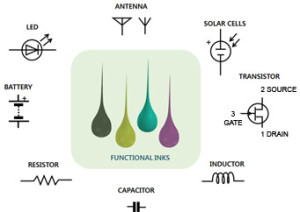
This focus issue will cover state-of-the-art efforts that address a variety of approaches to printable functional materials and devices.
Printing technologies in an atmospheric environment offer the potential for low-cost and materials-efficient alternatives for manufacturing electronics and energy devices such as luminescent displays, thin film transistors, sensors, thin film photovoltaics, fuel cells, capacitors, and batteries.
Significant progress has been made in the area of printable functional organic and inorganic materials including conductors, semiconductors, dielectric, and luminescent materials
These will enable exciting advances in printed electronics and energy devices. Some examples are printed amorphous oxide semiconductors, organic conductors and semiconductors, inorganic semiconductor nanomaterials, silicon, chalcogenide semiconductors, ceramics, metals, intercalation compounds, and carbon-based materials.
This focus issue will cover state-of-the-art efforts that address a variety of approaches to printable functional materials and device. The focus issue will include both invited and contributed papers reflecting recent achievements. Prospective authors are encouraged to submit contributions reporting the original research results or reviewing key emerging trends in printable functional materials and devices for publication in this focus issue.


